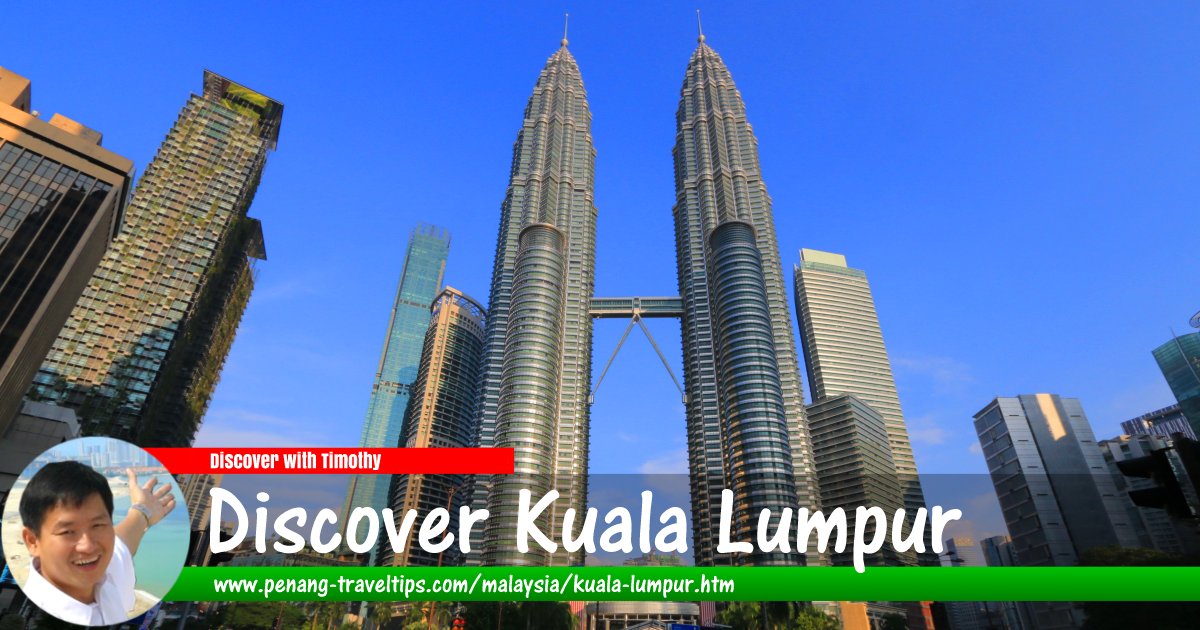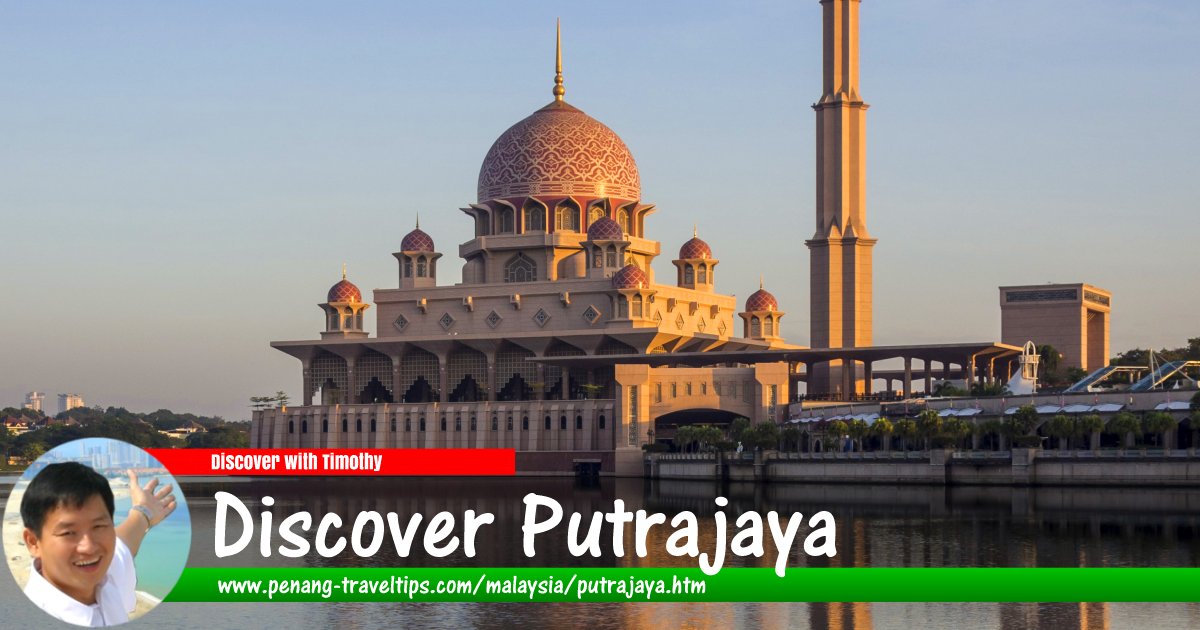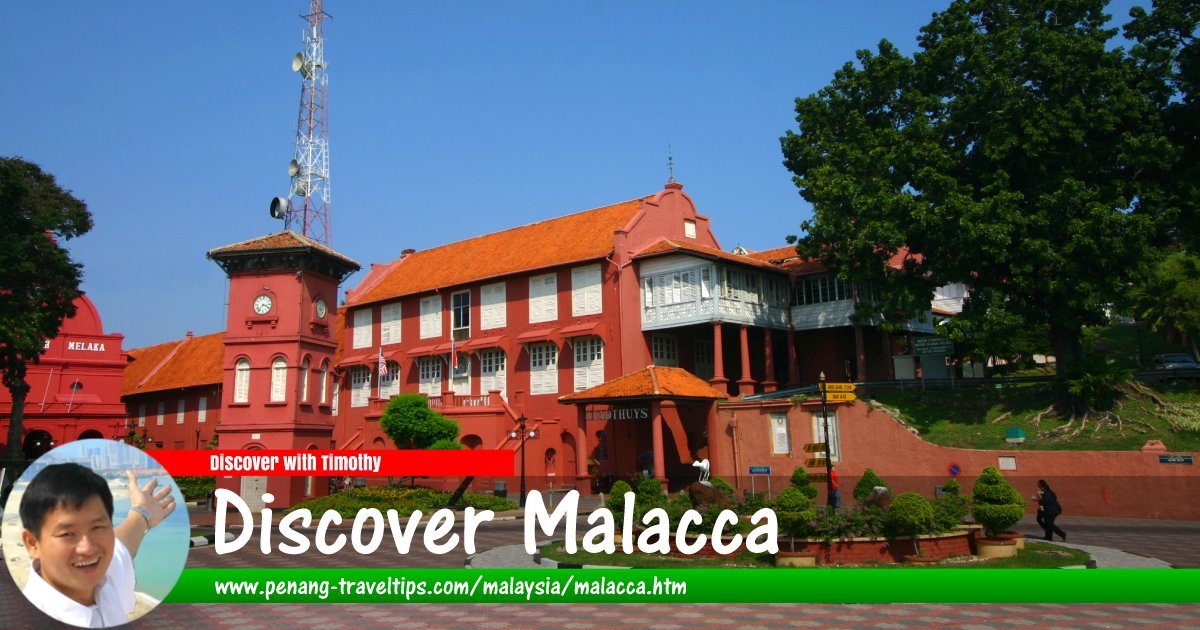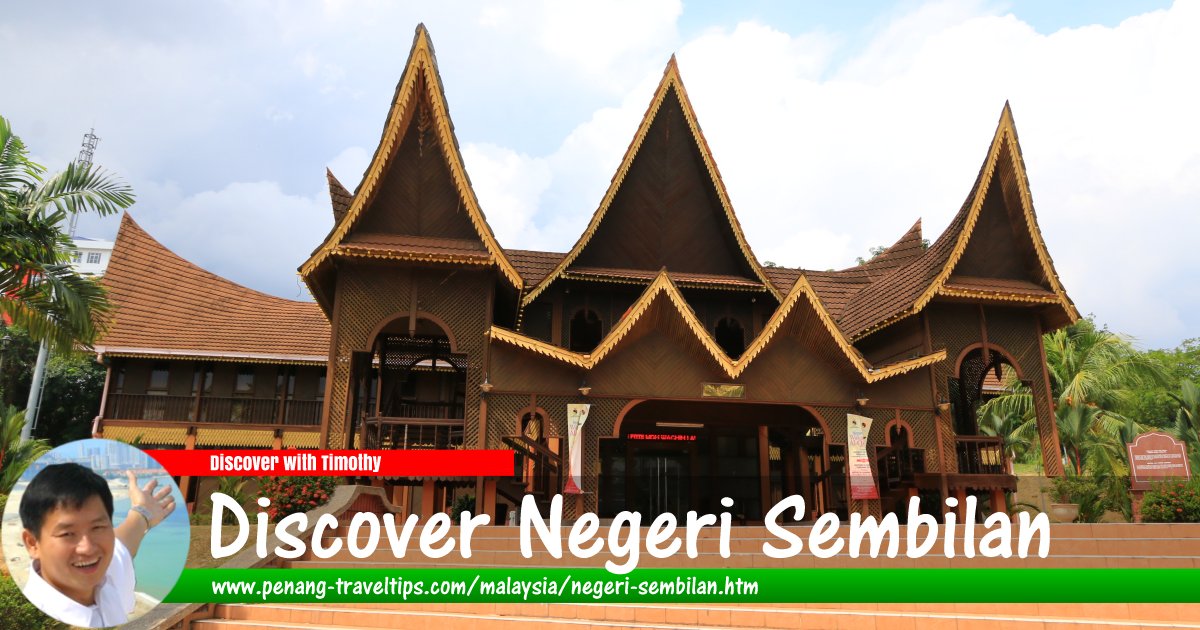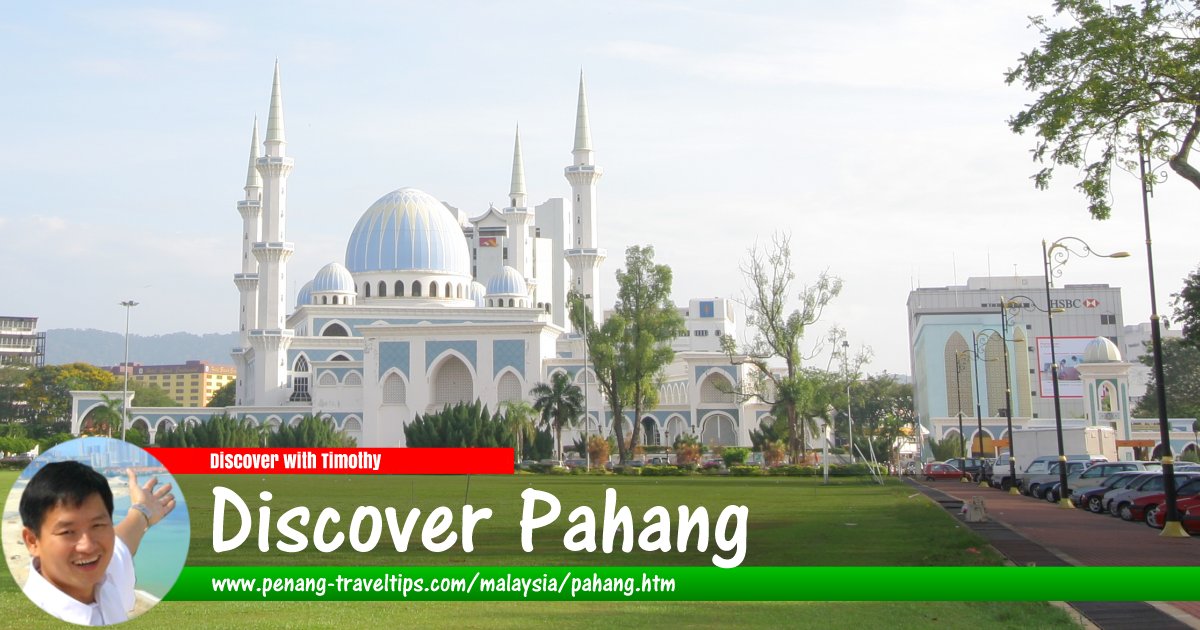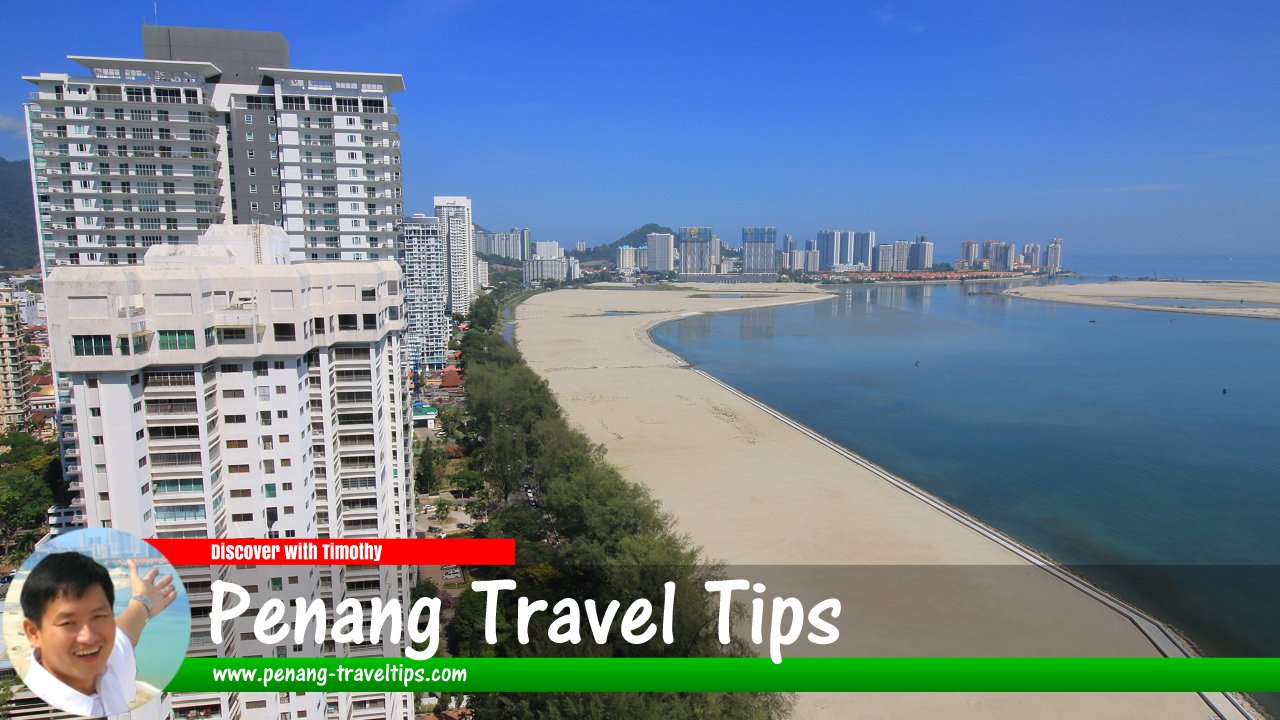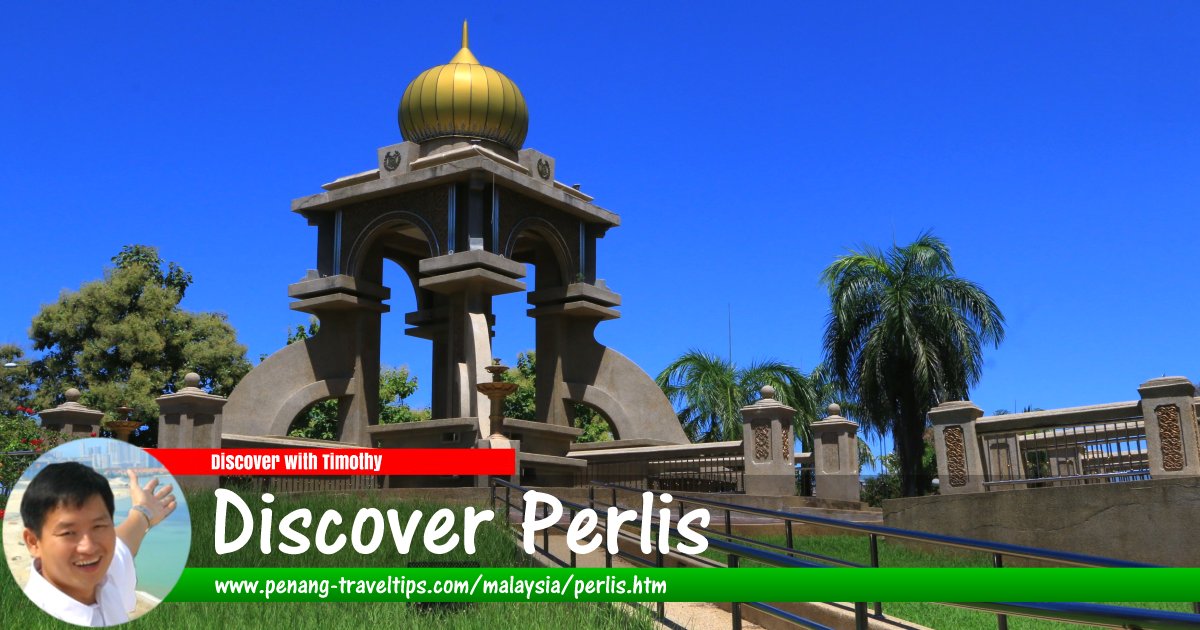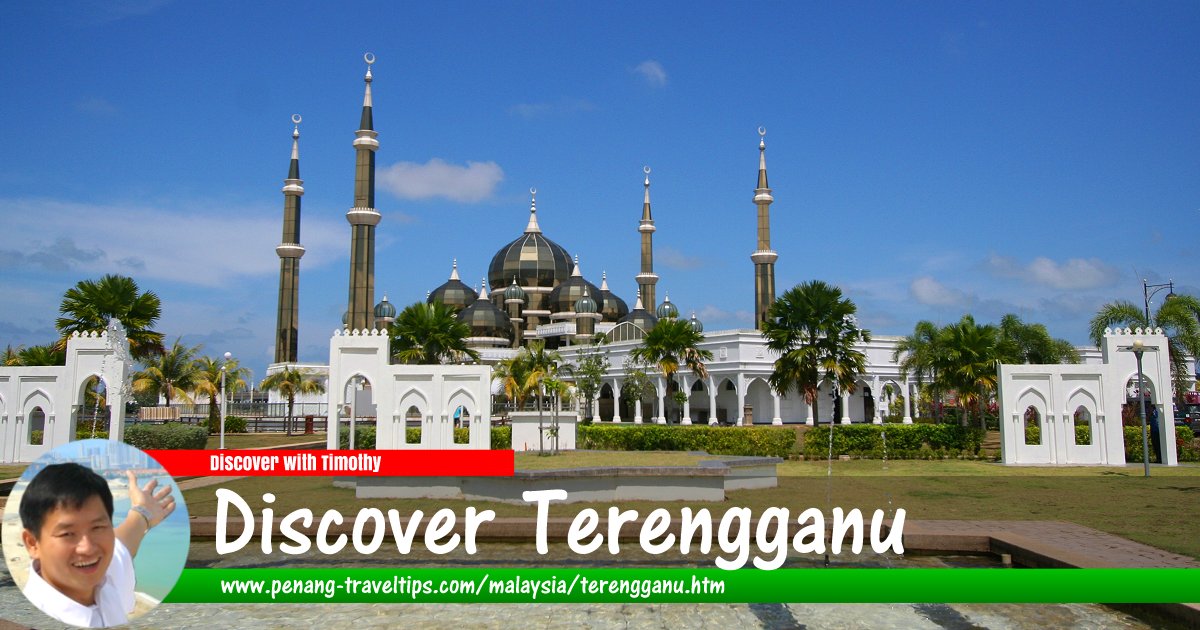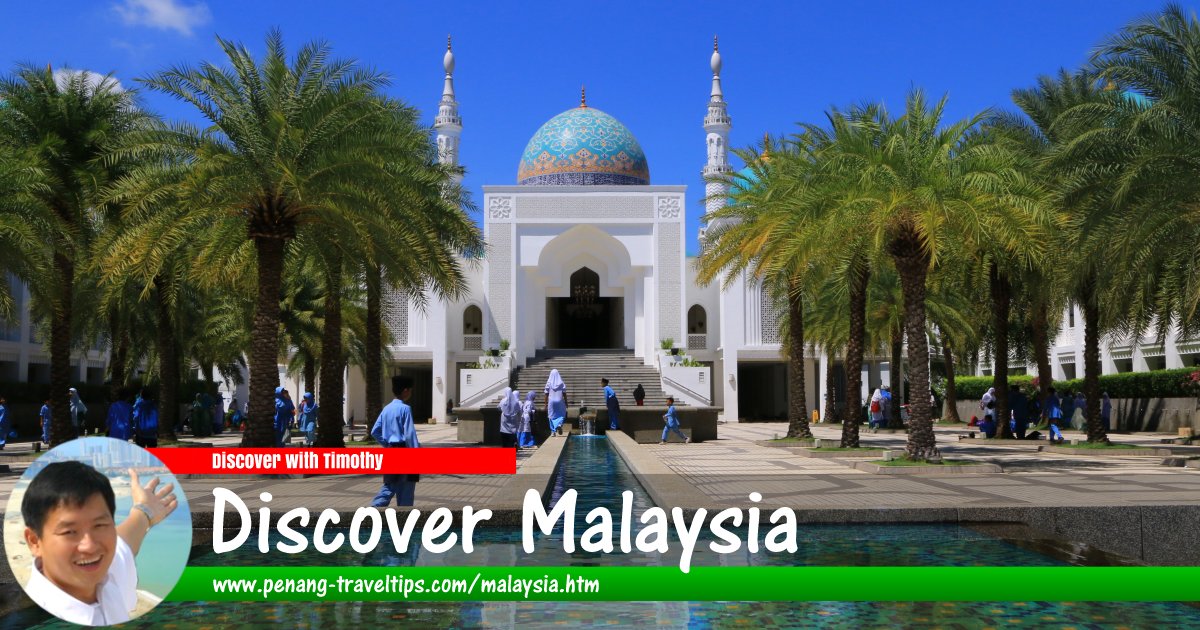 Discover Malaysia (14 November 2015)
Discover Malaysia (14 November 2015)
B. Melayu
Discover the Federal Territories of Malaysia
Discover Kuala Lumpur
Kuala Lumpur is the capital and biggest city. It is a vibrant city with many tourist sights.Discover Labuan
Labuan is being groomed to be an offshore financial centre. It has a limited number of tourist attractions.Discover Putrajaya
Putrajaya is planned to function as the administrative capital. It has many parks. Most of the built attractions are related to the administrative function of the government.Discover the States in Malaysia
Discover Johor
Johor is the southernmost state in Peninsular Malaysia.Discover Kedah
Kedah was traditionally known as the rice bowl of Malaysia. Nevertheless, it has a wide range of sights, including a popular hill station and a number of archaeological sites.Discover Kelantan
Kelantan is a state in the Muslim heartland of Peninsular Malaysia. It has a surprisingly large number of Thai Buddhist temples, due to its proximity to Thailand.Discover Malacca
Malacca is often regarded as the cradle of Malay civilization. It has the most number of historic sites.Discover Negeri Sembilan
Negeri Sembilan is a state established by Minangkabau settlers from Sumatra. The Minangkabau culture is reflected in the style of many landmark buildings here.Discover Pahang
Pahang is the biggest state in Peninsular Malaysia. However it is mountainous and forested. The state has a number of popular hill stations.Discover Penang
Explore Penang, Malaysia: a cultural melting pot with rich history, stunning heritage, modern infrastructure, and vibrant experiences for all travelers.Discover Perak
Perak is traditionally known as a tin-mining state. The state has a coastline with fishing villages while inland, there are numerous limestone outcrops.Discover Perlis
Perlis is the smallest and northernmost state in Peninsular Malaysia. It has a limited number of tourist attractions.Discover Sabah
Sabah is the second largest state in Malaysia. It is also home to the highest peak in Southeast Asia. The state has a number of diving destinations.Discover Sarawak
Sarawak is the biggest state in Malaysia. It is rich with indigenous culture, and every main town has its own characteristic.Discover Selangor
Selangor is the most well-developed state in Malaysia. It has a number of coastal destinations as well as historic sights.Discover Terengganu
Terengganu is a state on the East Coast of Peninsular Malaysia. It has beautiful coastal sceneties and island destinations.Discover Malaysia by Category
The other way to discover the places in Malaysia is to do it by category. For this purpose, I have assembled all the places that I describe according to category. Select what you are looking for from below.- STATE CAPITALS IN MALAYSIA
- STATES IN MALAYSIA
- STREETS IN MALAYSIA
- TOWNS IN MALAYSIA
- PLACES OF INTEREST IN MALAYSIA
- Accounting Firms in Malaysia
- Acupuncture Centres in Malaysia
- Advertising Agencies in Malaysia
- AEON Malls in Malaysia
- Aid Organisations in Malaysia
- Air Conditioning Repair in Malaysia
- Airports in Malaysia
- Antique Shops in Malaysia
- Apartments in Malaysia
- Army Camps in Malaysia
- Art Galleries in Malaysia
- Auditoriums in Malaysia
- Auto Gate Installers in Malaysia
- Auto Repair Shops in Malaysia
- Auto Service Centres in Malaysia
- Auto Spray Painting Shops in Malaysia
- Baby Product Stores in Malaysia
- Bakeries in Malaysia
- Baking Supply Shops in Malaysia
- Banks in Malaysia
- Beaches in Malaysia
- Boutiques in Malaysia
- Brethren Assemblies in Malaysia
- Bridges in Malaysia
- Buddhist Temples in Malaysia
- Businesses in Malaysia
- Bus Terminals in Malaysia
- Car Parks in Malaysia
- Car Showrooms in Malaysia
- Car Wash in Malaysia
- Caves in Malaysia
- Cave Temples in Malaysia
- Cemeteries in Malaysia
- Cenotaphs in Malaysia
- Chicken Rice Shops in Malaysia
- Child Care Centres in Malaysia
- Chinese Medical Halls in Malaysia
- Chinese Restaurants in Malaysia
- Chinese Temples in Malaysia
- Churches in Malaysia
- Clan Associations in Malaysia
- Clinics in Malaysia
- Cleaning Services in Malaysia
- Clocktowers in Malaysia
- Coffee Shops in Malaysia
- Colleges in Malaysia
- Commercial Properties in Malaysia
- Condominiums in Malaysia
- Consulates in Malaysia
- Consultancy Firms in Malaysia
- Contractors in Malaysia
- Convention Centres in Malaysia
- Cultural Villages in Malaysia
- Dental Clinics in Malaysia
- Department Stores in Malaysia
- Dialysis Centres in Malaysia
- Econsave Stores in Malaysia
- Embassies in Malaysia
- Empire Sushi outlets in Malaysia
- Entertainers in Malaysia
- Event Management Companies in Malaysia
- Expressways in Malaysia
- Eye Specialists in Malaysia
- Factories in Malaysia
- Federal Territories of Malaysia
- Ferry Services in Malaysia
- Financial Institutions in Malaysia
- Fire Stations in Malaysia
- Flats in Malaysia
- Florists in Malaysia
- Food Courts in Malaysia
- Foot Reflexology Centres in Malaysia
- Forest Parks in Malaysia
- Forts in Malaysia
- Fountains in Malaysia
- Funeral Parlours in Malaysia
- Furniture Shops in Malaysia
- Garden Centres in Malaysia
- Giant Hypermarkets in Malaysia
- Golf Courses in Malaysia
- Government Buildings in Malaysia
- Government Quarters in Malaysia
- Graves in Malaysia
- Gurdwaras in Malaysia
- Handicraft Centres in Malaysia
- Hawker Centres in Malaysia
- High-Rise Buildings in Malaysia
- Highways in Malaysia
- Hill Resorts in Malaysia
- Hindu Temples in Malaysia
- Historic buildings in Malaysia
- Historic Sites in Malaysia
- Hospitals in Malaysia
- Hotels in Malaysia
- Hot Springs in Malaysia
- Housing Estates in Malaysia
- Hypermarkets in Malaysia
- Indian Restaurants in Malaysia
- Industrial Parks in Malaysia
- International Schools in Malaysia
- Islands in Malaysia
- Jetties in Malaysia
- Jewellery Shops in Malaysia
- KFC Restaurants in Malaysia
- Kindergartens in Malaysia
- Klinik Kelihatan in Malaysia
- Lakes in Malaysia
- Libraries in Malaysia
- LRT Stations in Malaysia
- Malay Restaurants in Malaysia
- Markets in Malaysia
- Mausoleums in Malaysia
- Megaliths in Malaysia
- Metal Works in Malaysia
- Middle-Eastern Restaurants in Malaysia
- Mini Markets in Malaysia
- Mobile Motorcycle Mechanics in Malaysia
- Monorail Stations in Malaysia
- Monuments in Malaysia
- Moral Uplifting Societies in Malaysia
- Mosques in Malaysia
- Mountains in Malaysia
- MRT Stations in Malaysia
- Multi-Purpose Halls in Malaysia
- Museums in Malaysia
- Musical Instrument Shops in Malaysia
- Music Schools in Malaysia
- Nasi Kandar Restaurants in Malaysia
- National Parks in Malaysia
- Newspaper Bureaux in Malaysia
- Night Clubs in Malaysia
- Nursing Homes in Malaysia
- Nutritional Product Stores in Malaysia
- Nyonya Restaurants in Malaysia
- Office Equipment Stores in Malaysia
- Old Folks Homes in Malaysia
- Organisations in Malaysia
- Pakistani Restaurants in Malaysia
- Palaces in Malaysia
- Pantai Hospital in Malaysia
- Parks in Malaysia
- Pedestrian Malls in Malaysia
- Pet Grooming Shops in Malaysia
- Petrol Stations in Malaysia
- Pillboxes in Malaysia
- Plant Nurseries in Malaysia
- Playing Fields in Malaysia
- Police Stations in Malaysia
- Post Offices in Malaysia
- Print Shops in Malaysia
- Prisons in Malaysia
- Properties in Malaysia
- Recreation Clubs in Malaysia
- Restaurants in Malaysia
- Rest Houses in Malaysia
- Rivers in Malaysia
- Roundabouts in Malaysia
- Royal Galleries in Malaysia
- Schools in Malaysia
- Seafood Restaurants in Malaysia
- Second-Hand Car Dealers in Malaysia
- Shopping Malls in Malaysia
- Skyscrapers in Malaysia
- Souvenir Shops in Malaysia
- Spas in Malaysia
- Specialty Shops in Malaysia
- Stadiums in Malaysia
- Stationery Shops in Malaysia
- Steamboat Restaurants in Malaysia
- Straits in Malaysia
- Street Art in Malaysia
- Supermarkets in Malaysia
- Suraus in Malaysia
- Swimming Pools in Malaysia
- Tailors in Malaysia
- Teochew Associations in Malaysia
- Tesco Stores in Malaysia
- Thai Restaurants in Malaysia
- Thai Temples in Malaysia
- Theme Parks in Malaysia
- Tourist Attractions in Malaysia
- Traditional Chinese Medicine Centres in Malaysia
- Trains in Malaysia
- Train Stations in Malaysia
- Transport Companies in Malaysia
- Universities in Malaysia
- Utility Plants in Malaysia
- Villages in Malaysia
- Waterfalls in Malaysia
- Waterfront Promenades in Malaysia
- Wesley Methodist Churches in Malaysia
- Zoos in Malaysia
Malaysia in brief
Malaysia is a country in Southeast Asia. It has a total landmass of 330,803 square kilometers (127,724 square miles). The country is divided into two parts by the South China Sea. These are presently known as Peninsular Malaysia (130,598 sq km/50,424 sq miles) and East Malaysia (200,565 sq km)1, representing 61% of the landmass but only about 20% of the population.The capital of Malaysia is Kuala Lumpur while the administrative capital is Putrajaya. The island of Labuan is also part of the Federal Territories of Malaysia.
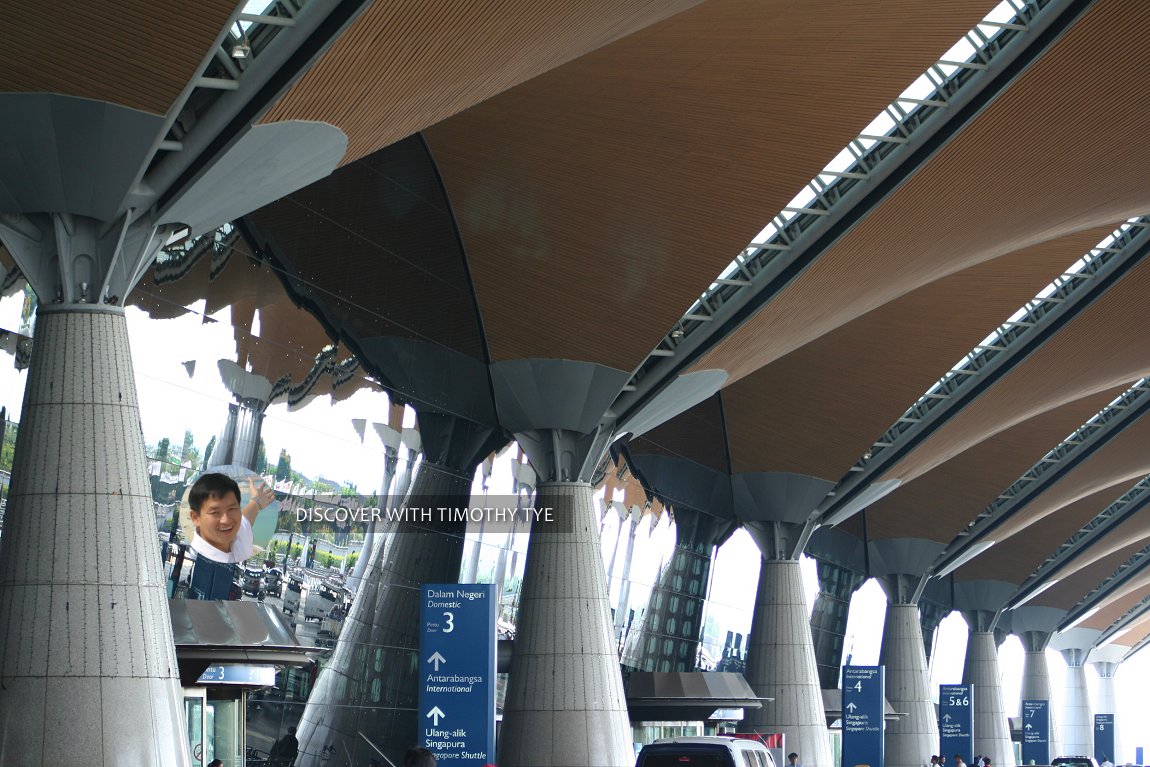 KLIA (1 March, 2006)
KLIA (1 March, 2006)
Arriving in Malaysia
The majority of visitors arrive in Malaysia by flight, with a good number arriving by road and by rail from Thailand and Singapore, and some by sea.There are five international airport in Malaysia namely the Kuala Lumpur International Airport (KLIA), Kota Kinabalu International Airport, Penang International Airport, Kuching International Airport, Senai International Airport and Langkawi International Airport.
I will describe below how most visitors arrive via KLIA. For the other international airports, please refer to their respective pages in the links above.
Arriving at KLIA and KLIA2
The Kuala Lumpur International Airport comprises KLIA and KLIA2. KLIA is the main terminal. This is where most of the international flights arrive, and is the home for Malaysia Airlines, the country's main flag carrier. KLIA comprises the main building as well as a satellite building, which is linked by a free aerotrain service.Next to KLIA is KLIA2, the low-cost carrier terminal. This is the home to AirAsia, the main low-cost carrier airline.
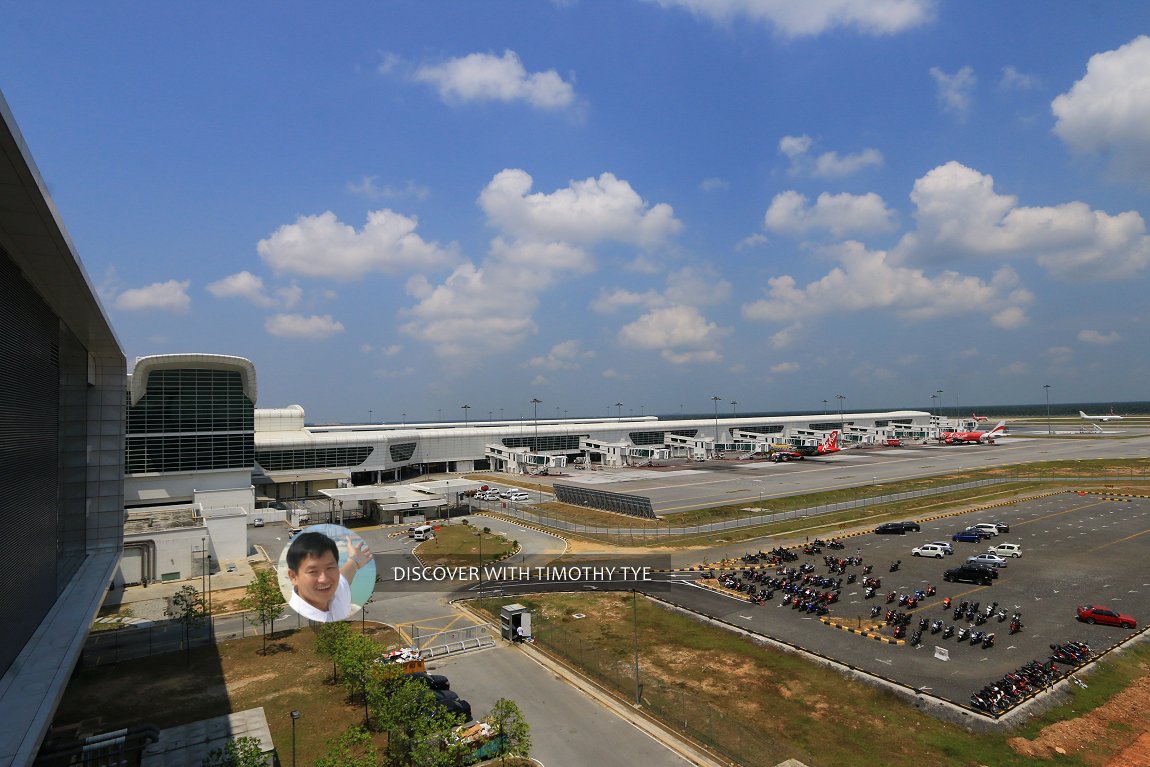 KLIA2 (6 July, 2016)
KLIA2 (6 July, 2016)
Upon arriving at KLIA or KLIA2, follow the signages to exit the airport. For more details, please read Arriving At KLIA main terminal and KLIA2 User Guide.
Map of the States and Federal Territories of Malaysia
This website offers you information on the tourist attractions and places of interest all over Malaysia. To make it easier for you to find your way about, I have separated them into the places in the Federal Territories and the places in the States of Malaysia.
Administrative Divisions of Malaysia
Malaysia comprises three Federal Territories and thirteen states. The states in Peninsular Malaysia, as well as the Federal Territory of Kuala Lumpur, are subdivided into districts. Districts are administered under district councils (majlis daerah), while some of the bigger towns and their surrounding areas administered by municipal councils (majlis perbandaran). Towns with city status are administered by city councils (majlis bandaraya), which is also called city hall (dewan bandaraya) in the case of Kuala Lumpur. The districts and municipalities are further subdivided into counties (mukim).The Federal Territory of Putrajaya is subdivided into precincts while the Federal Territory of Labuan comprises Bandar Labuan and 27 administrative villages (kampung). The states of Sabah and Sarawak are subdivided into divisions (bahagian) which are then further subdivided into districts (daerah).
Government of Malaysia
Malaysia is a federal constitutional elective monarchy with the head of state being the Yang di-Pertuan Agong, or King, who is elected to the office for a five-year term among the nine hereditary rulers of the Malay states. At time of writing (May 2018), the King of Malaysia is Muhammad V of Kelantan.The Parliament of Malaysia comprises the lower house (House of Representatives), which comprises 222 members (known as Members of Parliament), elected for a maximum term of 5 years; and the upper house (Senate), comprising 70 members (known as Senators), who sit for 3-year terms. Of the 70 Senators, 26 are elected by the 13 State Assemblies while the remaining 44 are appointed by the King upon the recommendation of the Prime Minister. Parliamentary election follows the first-past-the-post system.
Executive power of the Government of Malaysia is vested in the Cabinet, which is led by the Prime Minister, who is both the Head of Cabinet and Head of Government.
Geography of Malaysia
Malaysia covers 329,613 square kilometers (127,264 square miles). It comprises Peninsular Malaysia (also called West Malaysia) and East Malaysia. Peninsular Malaysia shares land borders with Thailand, while East Malaysia shares land borders with Indonesia and Brunei. Peninsular Malaysia is also physically linked to Singapore by the Johor-Singapore Causeway and the Malaysia-Singapore Second Link.Peninsular Malaysia measures 740 km (460 miles) from north to south, and is roughly 322 km (200 miles) at its widest. The East and West Coasts of Peninsular Malaysia are separated by the main range, Banjaran Titiwangsa, with its tallest peak being Gunung Korbu (2,183 m / 7,162 ft). The tallest peak in Peninsular Malaysia is Gunung Tahan (2,187 m / 7,175 ft) while the longest river is Sungai Pahang (459 km / 285 mi).
Economy of Malaysia
As of 2014, Malaysia has a Gross Domestic Product at Purchasing Power Parity of US$746.821 billion, giving it the third largest GDP in the ASEAN region behind the more populous Indonesia and Thailand, and the 28th largest in the world1 It is the 28th largest economy in the world, and according to HSBC economist Karen Ward2, the economy will in 2050 grow to US$1.2 trillion, making it the 21st largest in the world.Population of Malaysia
The most populous state in Malaysia is Selangor (as of 2000)3, with a population of 4.2 million people, followed by Johor (2.7 million) and Sabah (2.6 million). Selangor also recorded the highest percentage of in-migrants of any state in Malaysia, 28.2% in 2003-2004 and 16.4% in 2006-2007, with the majority coming from Kedah (8,900), Perak (6,500), the Federal Territory of Kuala Lumpur (5,300) and Kelantan (4,400).The state of Penang has the highest percentage of migrants, for the period of 2008 to 2009, with the highest number of net migrants (15,400), a contra of 20.7% in-migrants and 5.3% out-migrants. In other words, of 100 persons who either moved to or out of Penang, the state received 60 addition persons.
References
- Report for Selected Countries and Subjects (Malaysia), by the International Monetary Fund (2014).
- These Economies Will Dominate The World in 2050, by Business Insider (13 January, 2012).
- List of Cities, Malaysia (2010), by the Department of Statistics, Malaysia.
- East Malaysia
 Latest updates on Penang Travel Tips
Latest updates on Penang Travel Tips

Copyright © 2003-2025 Timothy Tye. All Rights Reserved.

 Go Back
Go Back